When we think of animals and plants, we have a pretty good way of dividing them into two distinct groups: one converts sunlight into energy and the other has to eat food to make its energy. Well, those dividing lines come crashing down with the discovery of a sea slug that is truly half animal and half plant. Its official name is Elysia chlorotica.
In this article, incredibly interesting facts about Elysia chlorotica will be discussed explicitly.
Chlorophyll Production: From Plant To Animal
Elysia chlorotica, the creatures do something no other animals do: they can produce chlorophyll, the green pigmentation which is a key ingredient in allowing plants to photosynthesize sunlight into useful energy. These sneaky slugs seem to have stolen the genes that enable this skill from the algae that they’ve eaten. With their contraband genes, the slugs can carry out photosynthesis — the process plants use to convert sunlight into energy.
The slugs can manufacture chlorophyll, the green pigment in plants that captures energy from sunlight and hold these genes within its body. The term Kleptoplasty (retention of “stolen plastids”) is used to describe the practice of using hijacked genes to create nutrients from sunlight. It’s pretty incredible how these green slugs manage to hijack the genes of the algae on which it feeds. The name of this algae is Vaucheria litorea. Elysia chlorotica lives in a subcellular endosymbiotic relationship with chloroplasts of this marine heterokont alga Vaucheria litorea.
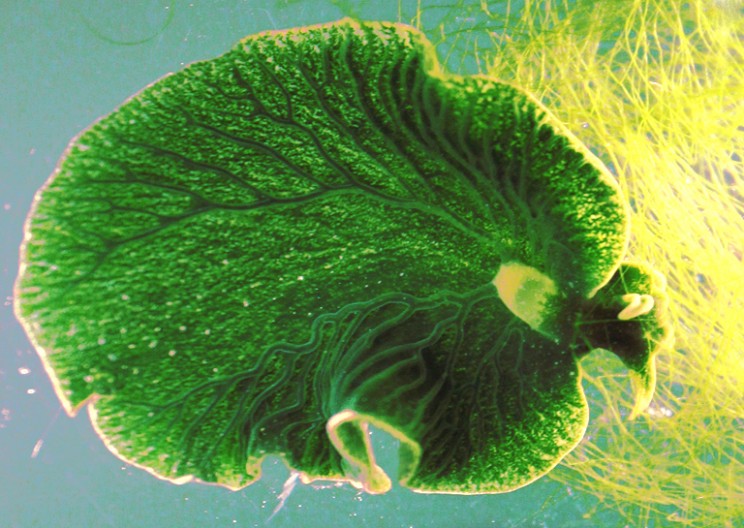
So far, Elysia chlorotica, the green sea slug is the only known animal that can be truly considered Solar-powered, although pea aphids and spotted salamanders exhibit some plant-like behaviors. Many scientists have studied the green sea slugs to confirm that they are actually able to create energy from sunlight.
The skin of Elysia chlorotica
Karen Pelletreau’s study shows close-up photos of the sea slug’s skin. These are given as follows:
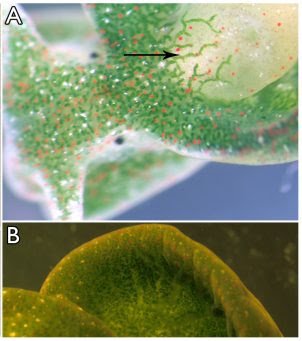
The explanation of the above two figures is mentioned below:
(A) A defined tubule of the digestive diverticula extending into the parapodial region of the animal (arrow). The digestive system consists of densely packed tubules that branch throughout the animal’s body. Each tubule is made up of a layer of single cells containing animal organelles and numerous algal plastids. This cell layer surrounds the lumen.
(B) Magnified image of the epidermis of E. chlorotica showing densely packed plastids. The animals are light grey in color without their resident plastids, which contribute to chlorophyll to render the sea slugs bright green.
Habitat
These sea slugs live in salt marshes in New England and Canada. In addition to burglarizing the genes needed to make the green pigment chlorophyll, the slugs also steal tiny cell parts called chloroplasts, which they use to conduct photosynthesis. The chloroplasts use the chlorophyll to convert sunlight into energy, just as plants do, eliminating the need to eat food to gain energy.
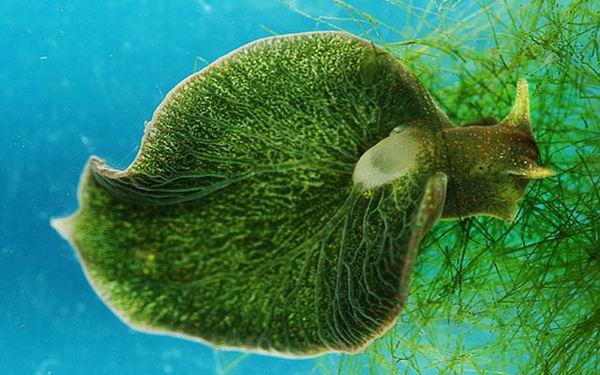
Publication of Sydney Pierce
Sidney Pierce is a biologist at the University of South Florida in Tampa. He has been studying the unique creature Elysia chlorotica for about 20 years. He presented his most recent findings at the annual meeting of the Society for Integrative and Comparative Biology in Seattle.
In this meeting, Pierce said-
- This is the first time that multicellular animals have been able to produce chlorophyll.
- Elysia chlorotica can make its energy-containing molecules without having to eat anything.
- There is no way on earth that genes from an alga should work inside an animal cell. And yet here, they do. They allow the animal to rely on sunshine for its nutrition. So if something happens to their food source, they have a way of not starving to death until they find more algae to eat.
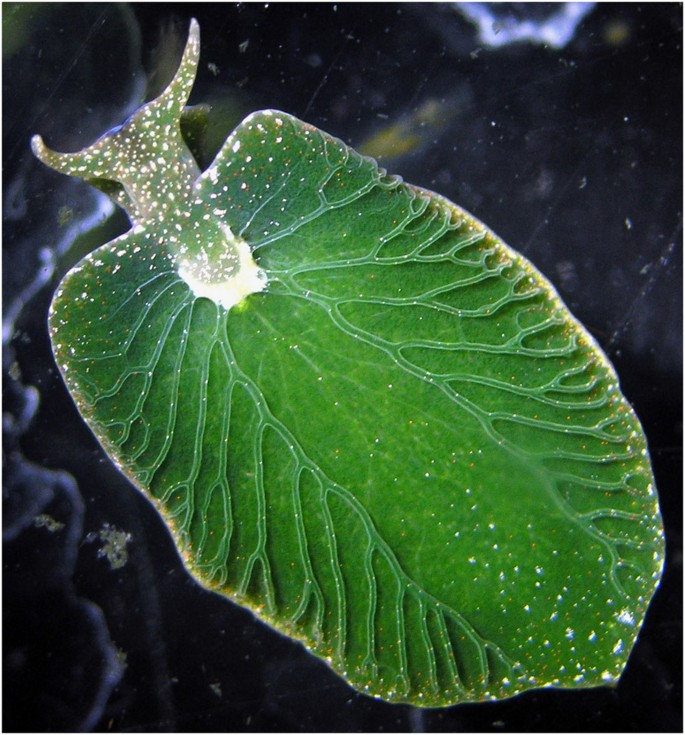
Experiment on the Photosynthesis capacity of Elysia chlorotica
Sea slug is so good at photosynthesis that they can live up to 9 months without having to eat any food. They get all their nutritional needs met by the chloroplasts that they’ve hijacked from the algae.
Pierce has conducted an experiment on Elysia chlorotica to observe for how long time these sea slugs can survive by photosynthesis only and without any food. Regarding this, he said, “We collect them and we keep them in aquaria for months. As long as we shine a light on them for 12 hours a day, they can survive [without food].”
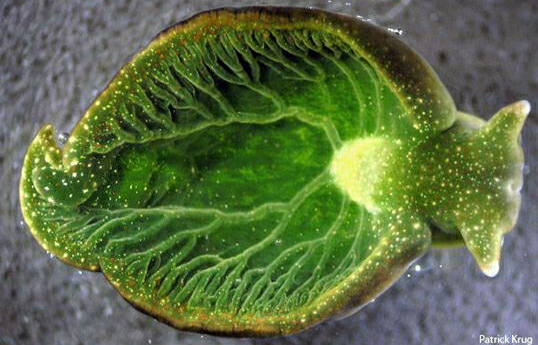
The researchers used a radioactive tracer to be sure that the slugs are actually producing the chlorophyll themselves, as opposed to just stealing the ready-made pigment from algae. In fact, the slugs incorporate the genetic material so well, they pass it on to further generations of slugs. The babies of thieving slugs retain the ability to produce their own chlorophyll, though they can’t carry out photosynthesis until they’ve eaten enough algae to steal the necessary chloroplasts, which they can’t yet produce on their own.”
Conclusion
The slugs’ accomplishment is quite a feat, and scientists aren’t yet sure how the animals actually appropriate the genes they need.
“It certainly is possible that DNA from one species can get into another species, as these slugs have clearly shown,” Pierce said. “But the mechanisms are still unknown.”
Reference:
- https://interestingengineering.com/meet-solar-powered-sea-slug-half-animal-half-plant.
- http://nowiknow.com/half-plant-half-animal/.
- https://www.livescience.com/6030-surprising-sea-slug-plant-animal.html.
 Plantlet The Blogging Platform of Department of Botany, University of Dhaka
Plantlet The Blogging Platform of Department of Botany, University of Dhaka
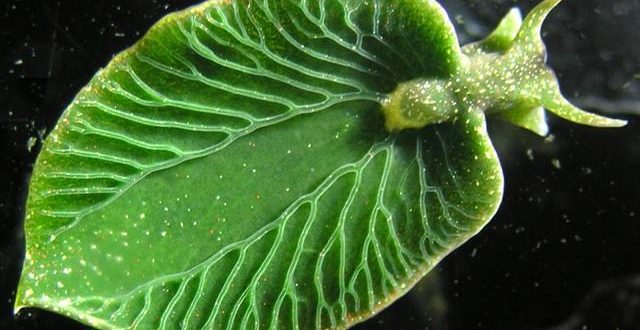




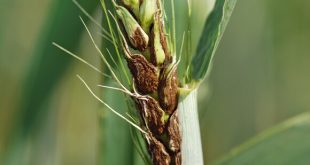
I don’t think the title of your article matches the content lol. Just kidding, mainly because I had some doubts after reading the article.
Thank you for your sharing. I am worried that I lack creative ideas. It is your article that makes me full of hope. Thank you. But, I have a question, can you help me?
Thanks for sharing. I read many of your blog posts, cool, your blog is very good.